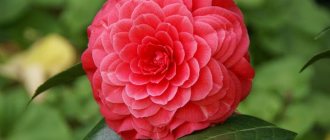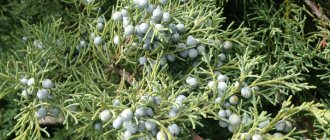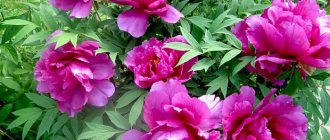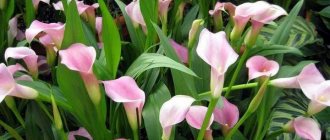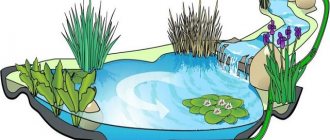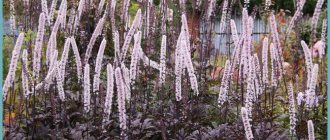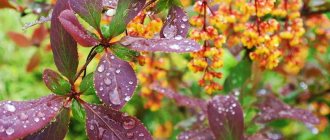The name of the plant anemone (Anemone), or anemone, comes from the Greek word, which means “daughter of the winds.” The fact is that even the slightest gust of wind causes the petals of such a plant to flutter. This herbaceous perennial is a representative of the Buttercup family. In nature, it can be found in regions with temperate climates of both hemispheres, while it prefers to grow in mountainous areas and on plains. There are approximately 160 species that bloom in different ways and at different times, which is why even experienced gardeners often get confused.
Features of cultivation
There are a large number of species and varieties of anemone, some of which are unpretentious to growing conditions, while others, on the contrary, require special care. The thing is that some species are tuberous, while others are rhizomatous. It is the rhizomatous species that are distinguished by their unpretentiousness and ease of care, while the tuberous ones can suffer greatly if they are not cared for correctly. There are several features of growing such a flower that you need to know:
- In dry and very hot weather, they must be watered.
- In autumn, flowers should be fed with complex mineral fertilizers, and before planting and during active growth or flowering, organic matter should be added to the soil.
- To prevent plants from freezing, they should be covered with a layer of fallen leaves in winter.
- The easiest way to propagate this plant is by seeds, which are sown before winter, or by root shoots in spring.
How to grow anemones and ranunculus. Website "Garden World"
What do anemone flowers look like?
Anemone is a flower that belongs to the ranunculaceae family. It has a very beautiful appearance, despite its simple inflorescences. Therefore, it is often used in landscape design.
There is a sad legend about the origin of anemones. According to her, this plant came from the tears of Aphrodite. The fact is that Adonis was in love with her and her friend Persephone. Having learned about this, Artemis punished Adonis, from whose blood the flowers of the same name grew. Inconsolable Aphrodite came to cry over the remains of her lover, and her tears turned into beautiful anemone flowers.
In nature, these flowers prefer shady places. At the same time, they have a delicate and sophisticated appearance, despite which the flowers tolerate cold well and grow even in the tundra.
Anemones are very diverse plants. We have collected a rough description of all types of such flowers.
What does an anemone look like:
- The root system of such flowers, depending on the species, can be presented in the form of a taproot or tubers. Moreover, if the first option is easy to propagate, then the second is capricious and requires special attention from gardeners.
- The stem is erect. Regardless of the species, it rarely grows above a meter.
- The leaves do not form a rosette. They are petiolate and can be divided or palmately dissected.
- The flower of this plant can have from five to twenty petals. Moreover, they can look like chrysanthemums, poppies, daisies, buttercups or peonies. The colors of such plants vary greatly; they can be red, white, blue, etc. It is also worth noting the contrast of their core, covered with stamens. It gives the flower a special charm.
- The fruits are capsules. They are spread by the wind.
Depending on the variety, the plant has a different flowering period. It may produce flowers in autumn or spring.
Preparing to plant anemones
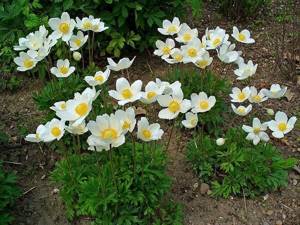
How to prepare the soil
Before you start planting an anemone, you should find the most suitable area and prepare the soil. A suitable area should be spacious, in partial shade and protected from drafts. Strongly growing rhizomes are very fragile; even contact can harm them. In addition, these flowers can be damaged by excessive heat, as well as drafts. The soil should be loose, nutritious and well drained. The best option is deciduous soil or loam with peat. To keep the soil loose, regular sand should be poured into it. If the soil is acidic, this can be corrected by adding wood ash or dolomite flour.
How to prepare seeds
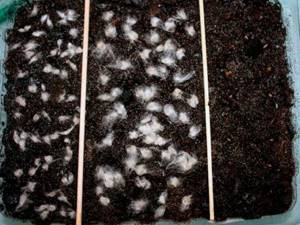
When growing anemones from seeds, you must remember that they have extremely low germination rates. About ¼ of the seeds will be able to germinate, but they must be freshly harvested. To increase the percentage of seed germination, they must be stratified; they are placed in a cold place for 4–8 weeks. To do this, combine the seeds with peat or coarse sand (1:3), the mixture must be moistened abundantly. Then it is sprayed with water every day to keep it moist all the time. After the seeds have swelled, they must be combined with a small amount of substrate, everything is thoroughly mixed and sprayed generously with water. Then the seeds are removed to a well-ventilated room, where it should not be warmer than 5 degrees. A few days after the sprouts appear, the bowl with the seeds must be transferred to the yard, where it is buried in the snow or soil, and the surface is sprinkled with straw or sawdust. At the very beginning of spring, transplant the seeds into boxes so that they germinate. If you don’t want to bother too much with growing anemones, then in the autumn, sow the seeds in containers filled with loose soil. The boxes should then be buried in the yard, with the top covered with cut branches. In winter, they will undergo natural stratification. In spring, the seeds should be removed from the soil and planted.
Preparing anemone tubers
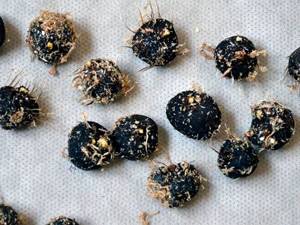
Before planting anemone tubers, they should be awakened from sleep. To do this, they are immersed in lukewarm water for several hours to swell. Then they are planted in pots filled with a moistened substrate consisting of sand and peat; they need to be buried only 50 mm. The substrate in pots must be provided with systematic moderate moisture. Also, before planting, the tubers can be “soaked”; for this they are wrapped in a cloth, which is generously moistened with a solution of epin and placed in a polyethylene bag, where they must remain for 6 hours. Tubers prepared in this way can be immediately planted in open soil.
Anemones (anemone) - planting tubers
Reproduction and cultivation of anemones
Anemones are a type of flower that is much more difficult to plant than it is to grow. Thus, if the plant has managed to take root, then you will not have problems with further care for it.
Planting plants of this type is something that requires great care and precision. Therefore, if you have such an opportunity, it is better to entrust this process to professionals.
If you want to plant the plant in question yourself, then you need to know exactly how this process should occur. Therefore, we suggest considering planting anemones with seeds and tubers.
It is best to plant anemones as tubers. At the same time, autumn is the most suitable time for this. We will describe to you a method without soaking the bulbs.
Planting anemones with tubers:
- First of all, you need to dig a planting hole. Its diameter should be fifteen centimeters and its depth thirty.
- It is necessary to pour drainage into the bottom of the dug hole. Use a mixture of coarse sand and crushed stone. The drainage is filled with ash combined with humus in equal quantities. The next layer is a regular planting substrate.
- Now you can plant the bulbs with the flat part facing up. It needs to be deepened by seven centimeters, then covered with soil and compacted. Water the planting.
Seeds collected by hand require complex preparatory work. Therefore, we suggest that you use purchased material. It needs to be planted in a large box filled with sand and peat. Then everything is covered with glass and kept in this form for a month in good lighting, periodically ventilating and watering with a spray bottle.
When four true leaves appear on the seedlings, the plants are transplanted into separate pots. There they will live for a year in greenhouse conditions before being released into the open ground.
Planting anemones in open ground

Planting anemone tubers in open soil is relatively simple, but you must determine the growing point. If the tubers are pre-treated and allowed to swell, the bud tubercles will become clearly visible, thanks to this you can understand how to plant them correctly. If there is any doubt about the location of the growing point, then it should be taken into account that the top of the tuber is always flat, so they must be planted with the sharp end down. If the tuber has a non-standard shape, then it needs to be planted on its side.
The depth of the hole should be about 0.15 m, and its diameter should reach 0.3–0.4 m. One handful of wood ash and humus should be poured into the hole, then the tuber should be placed in it. It is covered with soil, which is compacted a little. Planted tubers need abundant watering.
Planting Anemone Seeds
Seedlings that have at least two true leaf blades should be planted. Seedlings are planted in open soil in light shade in the second year of growth. When planting in autumn, the surface of the area must be covered with foliage or branches. The first flowering of an anemone that was grown from seeds will occur only after 3 years.
When planting tubers or seeds, if you take into account the timing, it is quite possible to ensure that the flowering of these plants continues from April to November. To do this, you need to purchase different varieties, then they are planted at the time recommended for each of them.
Anemone blanda: planting and care
Anemone propagation methods
Depending on the variety, propagation can be done in several ways.
Seeds
Not suitable for all anemone varieties. This is a very difficult method, since the seeds have a small percentage of germination - 10-15%. Flowering when propagated in this way begins only after two years.
Sow the seeds in boxes with soil for the winter, 1 cm deep. Then they are buried in the garden and covered with branches. As soon as the snow melts, the first shoots appear. You can sow in the ground in the spring, in which case the sprouts will sprout within a month. Seedlings do not tolerate high humidity.
Division of rhizomes
Young shoots are carefully separated from the main root and transplanted to a new location. The method is good for spring propagation.
Tubers
It is better to carry out when the flower is at rest. It is important to correctly determine the cut line of the tuber so that there are buds on all parts.
In the spring, the tubers are immersed in warm water, and after swelling they are planted in a box with sand and peat soil. Take a close look at the tuber:
If it is difficult to determine the correct position, then it is better to plant sideways.
Tubers are planted in open ground in October or early spring. The hole should be 15 cm deep. A pinch of ash and humus is added to the bottom.
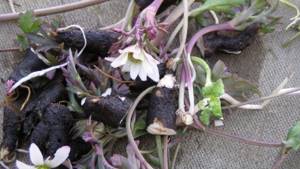
Anemone care
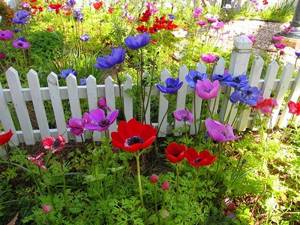
Caring for anemone is very simple. The most important thing is to ensure the correct level of humidity throughout the growing season. If the soil is over-moistened, rot may appear on the roots, which will lead to the death of the entire bush. If there is not enough moisture, especially during the formation of buds, this will negatively affect the growth and flowering of the plant. To achieve the optimal level of humidity, such a flower must be planted on a hill, and the area must have good drainage. It is recommended to cover the surface of the area with planted anemones with a layer of mulch (peat or fruit tree leaves), its thickness is about 50 mm.
Watering
In spring, such flowers need to be watered once every 7 days. If it rains regularly in the summer, then anemones do not need to be watered, with the exception of crown anemone when it blooms. If it is dry and hot in the summer, then watering is carried out every morning and evening after the sun sets.
Top dressing

During the flowering period, such a plant should be fed with organic matter (you cannot use only fresh manure). And in the fall you need to feed them with complex mineral fertilizer. If all the necessary fertilizers were added to the soil during planting, then there is no need to feed the anemone at all.
You should also systematically loosen the soil and pull out weeds; however, you should not use a hoe for weeding, as there is a risk of injury to the fragile system of flower roots.
Diseases and pests
This plant is disease resistant. Snails or slugs can live on the bushes. They must be collected by hand, and the plants themselves are sprayed with metaldehyde. Sometimes leaf nematodes or cutworm caterpillars (winter worm) settle on the bushes. Bushes infected with nematodes must be dug up and burned, and the soil on the site must be replaced.
Anemone breeds

This flower can be propagated by dividing the rhizome, seeds, tubers, or dividing the bush. How to grow anemone from seeds and propagate by tubers is described in detail above. To divide the rhizomes in the spring, they must be removed from the soil and divided into parts, the length of which should be 50 mm. Each division should have a bud; they are planted in loose soil, placed horizontally and buried only 50 mm. Such an anemone will be fully mature only after 3 years. If the plant is 4 or 5 years old, then it can be transplanted by dividing the bush.
After flowering
When growing anemones in mid-latitudes in the fall, they need to be dug up and prepared for wintering. The above-ground part of the dried tubers must be removed, then they are buried in sand or peat and stored in a cool, dark room, for example, in a non-damp basement. If it is expected that there will be no frost in winter, then the flowers can be left in the soil. To do this, the surface of the area must be covered with a thick layer of fallen leaves or covered with spruce branches, which will protect the plants from frost.
Diseases and pests
Perennial anemone is resistant to diseases and pests, but slugs and snails may appear on the bushes. They are collected by hand and treated with metaldehyde. When nematodes appear on the bushes, the plant is dug up and destroyed. The soil on the site will have to be replaced.
Viruses cause in anemones:
- spotting;
- browning;
- growth retardation and abnormalities,
- variegated leaves;
- greening of petals.
Source
Types of anemones with photos and names

Both in natural conditions and in culture, a fairly large number of species and varieties of anemone grow. Below is a description of the most popular of them.
All species are divided into spring and autumn (summer) according to their flowering time. Spring species are distinguished by their elegance and variety of colors, and they are painted in pastel colors, for example: cream, blue, snow white, pink, lilac, etc. Terry varieties are available.
Spring species are ephemeral and have a very short above-ground flowering cycle. They awaken in April, a friendly flowering is observed in May, while in July they begin a dormant period, while the foliage of most species does not fade until autumn.
Anemones are also divided according to the type of rhizome, so the tender anemone has a slow-growing tuberous rhizome, and the oak and buttercup anemone has a jointed rhizome, distinguished by its fragility.
Anemone blanda

This miniature plant reaches a height of only 5 to 10 centimeters. The most popular varieties are: Blue Shades (blue), Charmer (pink), White Splendour (white).
Oak anemone (Anemone nemorosa)

This species enjoys relatively low popularity among gardeners in mid-latitudes. The bush reaches a height of 0.2 to 0.3 m. Simple flowers have a diameter of 20–40 mm; as a rule, they are painted white, but there are varieties whose flowers are lilac, blue and pink. There are terry varieties. The main feature of this species is its unpretentiousness.
Anemone ranunculoides

This unpretentious species also has terry varieties. The bush reaches a height of 20 to 25 centimeters. The rich yellow flowers are somewhat smaller than those of the oak anemone. This species can be grown in almost any soil.
Autumn (summer) anemones include the following species: Japanese anemone (Anemone japonica), hybrid anemone (Anemone hybrida) and crown anemone (Anemone coronaria).

Most often these are large perennial plants with a well-branched, powerful root system. Flowering occurs from the last weeks of summer until mid-autumn. Crown anemone blooms twice a season: in the first weeks of summer and in autumn. Autumn species have slender and powerful peduncles that reach a height of 0.8–1 m; they bear several dozen semi-double or single flowers of various colors. The most popular varieties of crown anemone are:

- Anemone De Caen - simple single flowers of various colors;
- Mr. Fokker - the color of the flowers is blue.
Double anemone has varieties such as Lord Jim with blue flowers and Don Juan with deep red flowers. Popular varieties of hybrid anemone are: Honorine Jobert - white flowers, slightly pink below; Profusion - semi-double flowers of dark purple color; Queen Charlotte - semi-double flowers of deep pink color. The most popular varieties of Japanese anemone are: Pamina - large double flowers painted in dark pink, almost burgundy; Hadspen Abundance is a tall plant with cream-colored flowers; Prinz Heinrich - the color of semi-double flowers is deep pink.

